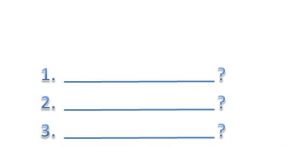
The Problem with Problem-Solving Leaders
Many employees long for leaders who can solve workplace problems—from flawed systems and procedures to inconsistent policies and managers. They want their leaders to see

Many employees long for leaders who can solve workplace problems—from flawed systems and procedures to inconsistent policies and managers. They want their leaders to see

I’ve been writing about strengthening your personal brand with reputation and behavior. No matter how much we value authenticity, we can’t ignore that standards for

How strong is your personal brand? Leaders, while valuing the need to perform well and meet commitments, also benefit by strengthening their brand. The fundamental

The difference between successful people and those who are not is often as simple as asking yourself these three questions: what can I do, what can

The term “information age” insufficiently captures our current business landscape. We face unprecedented data streams, vast knowledge networks and unknown problems. Success hinges on how

Like great works of art, a good manager is hard to define. But ask anyone how to define a bad manager, and be prepared for

Have you ever worked for a manager who was exceptionally brilliant at operational details, but micromanaged everyone to death? Or, did your manager frequently ask

Is your management style too reserved? I often hear people say how much they long for a manager who’s quiet, thoughtful, reserved and capable of

An organization’s health is only as sound as its leader’s decisions. Some companies prosper from wise leadership directions, while others struggle after flawed choices—choices that

How a leader responds to adversity reveals how effective that leader truly is. Reactions to setbacks or crises not only test leadership character but define

Business is an active, demanding endeavor. Only those who consistently apply themselves succeed. Organizations that thrive require leaders who actively dream, plan, engage, solve, pursue,

Surveys and studies indicate global job dissatisfaction is at a two-decade high. Disengaged employees account for nearly 70 percent of the workforce, which significantly affects







